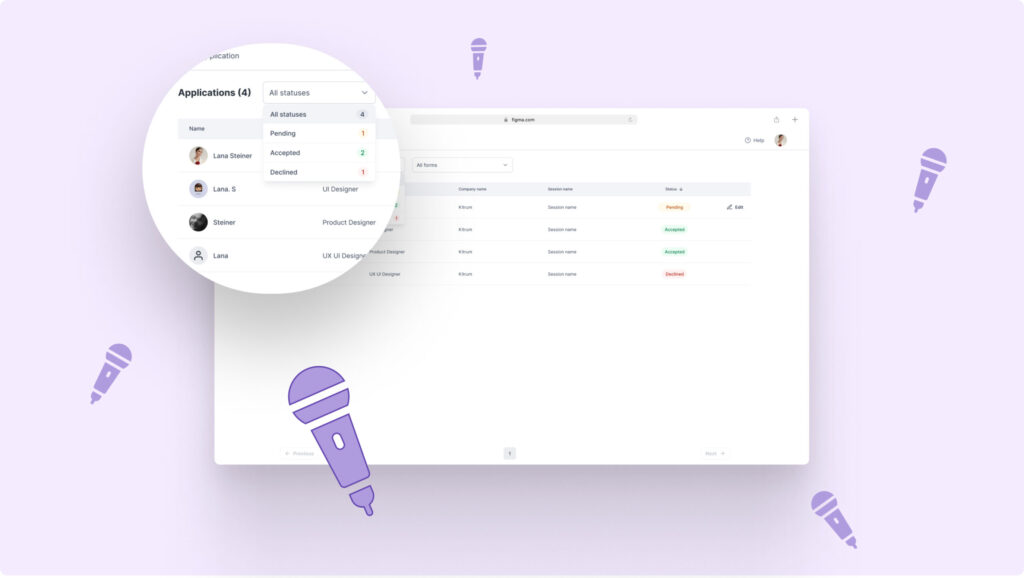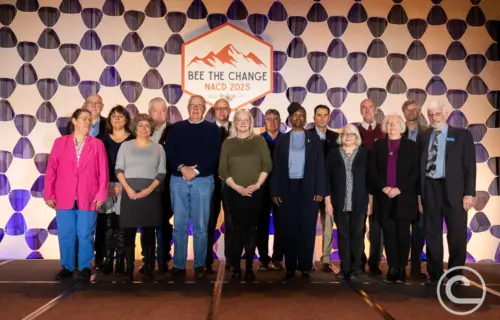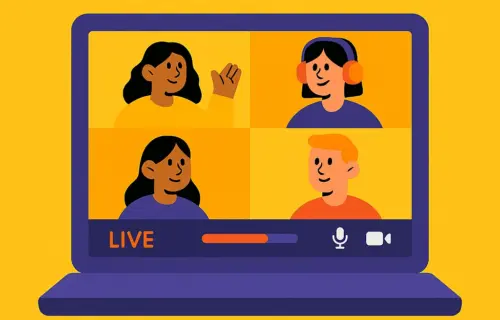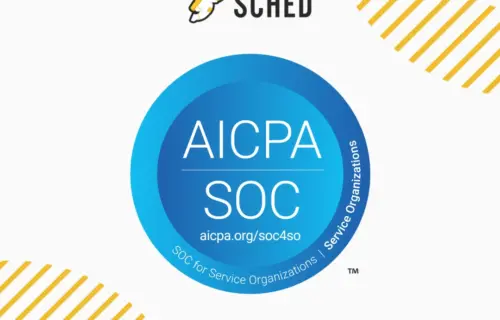Summary
- Attract better speakers and make your selection process easier: Learn how to give your Call for Papers clear objectives.
- Boost submissions, attendance, and event satisfaction: Discover how to curate event themes that people crave!
- Maximize exposure: Steal hot tips that will get your Call for Papers seen.
- Streamline the whole process: Get early (and free) access to our new Call for Speakers tool.
- Make offers TOP speakers can’t turn down: Learn how to offer value that the stars of your sector can’t refuse.
A big name on your conference agenda can make the difference. That one name can turn someone who is merely interested into someone who is 100% attending.
If you mess up your Call for Speakers, it will lead to a flat event schedule. This will harm your attendance and your overall event satisfaction.
That’s why we’re putting out this warning. The most common and dangerous mistakes we see in Call for Papers.
Read on, and you’ll be rewarded with top advice that you can put into action in your next Call for Papers!
Lack of clear objectives in your Call for Papers
Table of contents
Without a well-defined purpose, the call may fail to attract the right speakers and submissions. Ultimately, impacting the success of the university event.
Objectives should be SMART: Specific, Measurable, Achievable, Relevant, and Time-bound.
For example, a university event planner might aim to…
- Increase website traffic by 20%
- Within three months through targeted speaker submissions
OR
- Enhance the event’s profile by drawing in renowned experts,
- Thereby improving the conversion rate by 15%.
These objectives guide the entire call for papers process. It ensures the content aligns with the overall goals of the event.
For instance, if the goal is to foster innovative discussions on sustainability, the call for papers should explicitly state this.
This clarity not only helps in attracting submissions that are in line with the event’s goals but also assists in the subsequent selection process.
- Setting objectives is easier said than done. But with this short blog, you can learn how to set the right goals for an event!
How to Create an Event Schedule that Will WOW Your Attendees from Sched Support on Vimeo.
Ignoring target audience needs
Event planners must first identify the demographic breakdown of potential attendees. This includes assessing their academic focus, career stage, and interests. This information is pivotal in tailoring the content to ensure it is both relevant and engaging.
For instance, a call for papers aimed at early-career researchers might emphasize opportunities for networking and mentorship.
Alternatively, one targeted at seasoned academics could focus on advanced theoretical discussions or innovative research methodologies.
- To see targeted themes in action, check out these professional development topics educators are craving in 2024!
Personalize communication
- By acknowledging the recipient’s expertise and previous contributions to the field, event planners can foster a sense of respect and recognition.
- Simple strategies such as using a strong, clear, and concise subject line can maximize email open rates. It also provides a direct link to the submission portal simplifies the application process, making it more user-friendly.
Address concerns and offer clarity
- This might involve explaining the selection criteria, reviewing processes, or the benefits of participating.
- Clear, jargon-free language should ensure comprehensibility. Especially if the event attracts an international audience where English might not be the first language.
- Offering examples and analogies familiar to the audience can help clarify complex ideas. This makes the call for papers more accessible.
- Additionally, highlighting the relevance of the event’s theme to the audience’s research interests can further align their goals with those of the event.
Inadequate promotion strategy for your Call for Papers

- Begin by crafting compelling headlines that capture attention. And clearly convey the value of participating in your event.
- Incorporate storytelling in your posts. This engages potential speakers on a deeper level. It makes the opportunity more relatable.
- Visual aids such as infographics or short videos can significantly boost engagement and shareability.
- Ensure each post includes a clear call-to-action (CTA). This will direct users to the submission page
- Optimize the use of hashtags to increase visibility within academic and professional communities.
For even more bonus advice on promoting events on social media, take these 6 hot tips with you!
Build and optimize email campaigns
- Start by understanding their needs and pain points to tailor your message effectively.
- Here are 7 awesome event email campaigns you can use to boost your Call for Papers promotion!
- Personalization goes a long way in making recipients feel valued and more likely to engage with your content.
- Your emails should be concise yet engaging, highlighting the benefits of participating and what sets your event apart.
- A strong, clear CTA is essential to guide recipients toward submitting their papers.
- Utilize analytics from your email campaigns to refine your approach, ensuring maximum impact and conversion rates.
Leverage educational directories and networking
- Posting your call for papers on reputable conferences and educational directories can significantly expand your reach.
- These platforms are frequented by academics and professionals looking for opportunities to present their work.
- Additionally, attending other academic events and networking can provide direct access to potential speakers who might be interested in your event.
BONUS ADVICE – Here is our ultimate guide to promoting your call for papers!
Complex Call for Papers application process
Here are practical steps to ensure a smooth submission experience:
Your Call for Speakers page should at least include the following…
- Submission guidelines: Clearly state the required format, word count, and any specific content guidelines.
- Review process: Outline how each submission will be evaluated to maintain transparency and trust.
- Next steps: Provide explicit instructions on submitting proposals and what the submitters should expect after their submission.
Simplify the speaker submission process…
A complex application process can deter potential speakers. Simplify the process by:
- Allowing submissions directly through an online form on your event’s website or a specialized conference management platform.
- Avoiding the use of separate application forms that need to be downloaded and then uploaded.
- Providing clear, step-by-step instructions and using simple language to accommodate non-native English speakers.
Ensure clarity and support…
Maintain clarity in your call for papers by:
- Use simple, direct language and short sentences to ensure that all potential speakers.
- Offering examples and tips throughout the submission form to guide the submitters.
- Setting realistic expectations about the time required to complete the submission process and offering immediate confirmation once a submission is received.
BONUS ADVICE – Here is our ultimate guide to launching a call for papers for your next event!
Make it easy, make it professional: Elevate your Call for Speakers with our (FREE) purpose-built tool!

The above steps and necessities are a lot of hard work, and easy to get wrong. Your time is sacred, and your event is important.
That is why we developed our Call for Papers tool in response to the needs of event planners like you. The benefits of using our tool are simply too good to pass up.
- Super easy to use: create a professional and distinctive call-for-speakers page in just three simple steps. This not only saves you time but also ensures a polished and eye-catching presentation for potential speakers.
- Save hours of sifting through applications: Our software assesses the applications and presents you with a refined list of top candidates.
- Get better speakers: With the cream of the crop to choose from, your attendees will have a better experience.
Given the high demand for this feature, it’s crucial to secure your spot on the waiting list to ensure you don’t miss out on these valuable benefits.
join the waiting list and revolutionize your call for speakers process today!
Failing to offer value to speakers

Early engagement and clear benefits
- Event organizers must initiate contact with potential speakers 4-6 months in advance. This ensures there is ample time to communicate the value of the event.
- Engaging early through platforms like LinkedIn or the event’s social media channels is smart. It allows for a relationship to be built even before a formal speaker submission.
- This strategy not only aligns with the speakers’ schedules but also allows them to understand how their participation fits within the broader event themes.
Comprehensive support and creative freedom
- Providing robust support and allowing creative freedom are essential to offering real value to speakers. Event organizers should offer tailored support. This could include assistance with technology for virtual presentations or logistical support for in-person events.
- Additionally, allowing speakers to have a hand in designing their presentations. Perhaps letting them choose how they wish to engage with the audience can make the opportunity more appealing.
- For example, a speaker might prefer to use interactive polls or live Q&A sessions to increase audience engagement.
Attractive compensation and incentives
- Compensation for speakers should not be limited to financial remuneration. Offer a mix of incentives. Things like product promotion opportunities, exclusive access to services or products, or even professional recognition like awards.
- For university and college event planners, providing perks such as waiver of attendance fees, special recognition during the event, or a professional photography session can be very effective.
BONUS ADVICE – Make sure you avoid these common mistakes when managing event speakers!
Say Bye to Back-and-Forth Emails: Manage Speakers with Sched from Sched Support on Vimeo.
The takeaways
You now know what to avoid when crafting your Call for Papers. Better yet, you also have new tips that you can use to take your speaker submissions to new levels!
And, best of all, you’ve left with the ticket to our waiting list. Entry to that will give you early access to our BRAND NEW Call for Papers tool.
But why wait, you can start Sched for free now. We’ve got loads more awesome tools already waiting for you.








